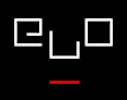Your cart is currently empty!
Showcase
-
The Beast
The first successful alternate reality game, this project never had an official name or website, but involved writing and work in other media being distributed across the Web on thirty… Read more.
·
-
The Unknown
The encyclopedia hypertext novel The Unknown tells the story of a group of successful authors (who call themselves “The Unknown” and happen to be named William Gillespie, Scott Rettberg, and… Read more.
·
-
The Carl Comics
The author of Understanding Comics and Reinventing Comics has invented several new comic forms for the Web. In “The Carl Comics,” McCloud offers an “expandable” comic and a “Choose Your… Read more.
·
-
afternoon, a story
afternoon, a story is one of the most widely-discussed works of electronic literature. It is the story of Peter, a technical writer who (in one reading) begins his afternoon with… Read more.
·
-
Galatea
Short’s all-text simulation lets the interactor converse with a statue that has come to life. Depending on how the conversation affects the mood of Pygmalion’s creation, and where the conversation… Read more.
·
-
Façade
Façade, a finalist 2004 Independent Games Festival, is an interactive drama that is visually rich and dramatically deep. A first-person-shooter interface accepts typed conversational statements and allows the animated characters,… Read more.
·
-
Shade
In this brief work of interactive fiction, Plotkin (a.k.a. zarf) causes the ordinary actions of looking for a glass of water and searching for plane tickets to turn terrifying, transforming… Read more.
·
-
{fray}
{fray} is an online storytelling community, linking writers of personal stories with talented designers, and encouraging story readers to share their own stories in response to those published on the… Read more.
·
-
Patchwork Girl
Patchwork Girl is one of the most widely-discussed and inventive works of hypertext in Storyspace. It is a feminist retelling of the Frankenstein story that asks “What if Mary Shelley’s… Read more.
·
-
Dakota
The pounding vortex of Dakota reworks Cantos I and II into a furiously driving, but still legible, loop of animated text. Young Hae-Chang’s piece seems to please everyone: It was… Read more.
·
